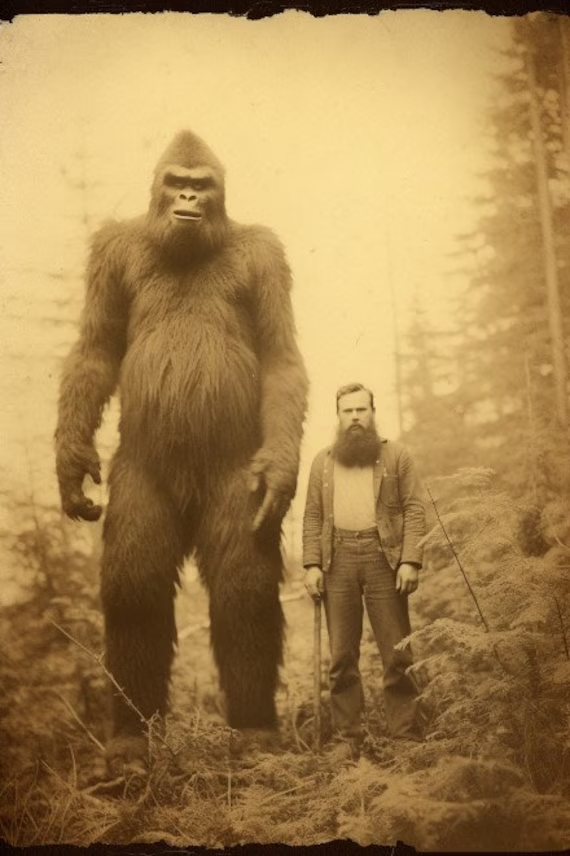midtoad.org – The legend of Sasquatch, also known as Bigfoot, is a staple of North American folklore, captivating the imagination of people for generations. Alongside the tales of Sasquatch roaming the dense forests, there are stories of giants that once walked the continent, leaving behind a trail of mystery and intrigue. These tales often blur the lines between myth and reality, prompting a quest for evidence to separate fact from fiction. This article delves into the lore surrounding Sasquatch and the giants of North America, examining the historical accounts, purported evidence, and the scientific scrutiny that these legends have faced.
The Legend of Sasquatch:
Sasquatch is described as a large, bipedal creature covered in hair, with sightings reported primarily in the Pacific Northwest of the United States and Canada. The legend is deeply rooted in the traditions of Indigenous peoples, who have stories about the creature that predate European contact. The name “Sasquatch” itself comes from the Halkomelem word “sásq’ets,” meaning “wild man” or “hairy man.”
Over the years, there have been numerous reported sightings, footprint casts, and even audio recordings that enthusiasts claim as evidence of the creature’s existence. The most famous of these is the Patterson-Gimlin film, shot in 1967, which shows a large, ape-like figure walking away from the camera. Despite these claims, no concrete scientific evidence has been produced to prove the existence of Sasquatch, leading skeptics to attribute sightings to misidentification, hoaxes, or the power of suggestion.
The Giants of North America:
Stories of giants are found in the mythologies of many cultures around the world, and North America is no exception. Native American legends often speak of giant beings, sometimes benevolent and other times malevolent, that interacted with human ancestors. These tales are rich in detail, describing giants with varying characteristics and abilities.
In more recent history, there have been claims of the discovery of giant human remains in North America. These include reports of skeletons that are significantly larger than the average human, which some interpret as evidence of a race of giants. However, these claims are often met with skepticism from the scientific community, as the evidence is usually anecdotal, lacking peer-reviewed research or proper archaeological context.
Separating Fact from Fiction:
The challenge in separating fact from fiction in these legends lies in the nature of the evidence. Sightings and anecdotal reports are subjective and can be influenced by numerous factors, including misidentification of known animals, hoaxes, and cultural expectations. The scientific method requires reproducible evidence that can be tested and verified, which has been lacking in the case of Sasquatch and the giants.
In the case of Sasquatch, DNA analysis of hair samples and other biological materials has not yielded conclusive results, and the Patterson-Gimlin film remains controversial, with experts divided on its authenticity. For the giants, the lack of verifiable skeletal remains and the debunking of many “giant” discoveries as hoaxes or misinterpretations of normal human remains have left the stories in the realm of legend.
Conclusion:
The legends of Sasquatch and the giants of North America continue to fascinate and intrigue. While these tales are an important part of cultural heritage and folklore, the scientific community has yet to find conclusive evidence to support their existence. As technology and methods of investigation advance, it is possible that new insights may emerge, either confirming these legends or further relegating them to the realm of myth. Until then, the stories of Sasquatch and the giants will remain a testament to the human capacity for wonder and the enduring allure of the unknown.
